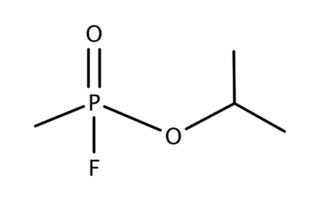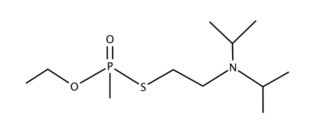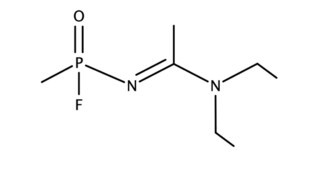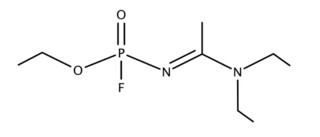In February 1945 the Soviet people’s commissar for state security, V.N. Merkulov, sent a memo on the status of the Manhattan Project to his boss, Lavrentii Beria, head of the NKVD. Merkulov was responsible for collecting information from Soviet spies inside the Manhattan Project – in particular from Klaus Fuchs, a German refugee who was part of the British mission to Los Alamos, and Ted Hall, a bright young physicist from New York. Both were communist sympathisers. They had sent detailed information to Moscow on the bomb’s design, as well as a list of the nuclear facilities being commissioned for the project. Merkulov reported that the British and American scientists working on the bomb had shown the weapon was feasible and that the main challenge was to produce a critical mass of fissile material. This could be uranium-235, which can only be produced in quantity using sophisticated enrichment equipment, or plutonium-239, which can only be made in a nuclear reactor. So if the Soviet Union was to build a bomb it would have to copy the Manhattan Project and set up production facilities for uranium-235 or plutonium-239, as well as a facility where the weapon could be designed and constructed. The Manhattan Project, as Merkulov discovered, had commissioned three plants, known as Camps X, W and Y. Camp X, at Oak Ridge, Tennessee, was devoted to uranium enrichment; Camp W, at Hanford in Washington State, housed the reactors for producing plutonium; and Camp Y, at Los Alamos in New Mexico, was where the theoretical and experimental physics of the weapon were studied and where the bombs to be used later that year against Japan were being designed.
Beria, who had responsibility for the Soviet nuclear programme, decided that three similar nuclear plants should be built in the USSR. So, in December 1945, Sverdlovsk-44 (now called the Ural Electromechanical Plant) at Novouralsk in Sverdlovsk oblast was set up as a Soviet Oak Ridge, and Chelyabinsk-40 (now the Mayak Chemical Complex) near Ozyorsk in Chelyabinsk oblast as a Soviet Hanford. In April 1946, Arzamas-16 (now Sarov) in Nizhny Novgorod was established as the Soviet Los Alamos, responsible for weapons development. All three centres were completely secret: the new closed cities where the facilities were constructed did not appear on any map and officially did not exist. The Soviet Union now had its Camps X, W and Y. But uranium-235 and plutonium-239 were not the only isotopes needed for a bomb: in order to initiate the explosion, neutrons had to be introduced at exactly the moment the fissionable material achieved critical mass. This was achieved by bringing together the isotopes polonium-210 and beryllium-9. Polonium-210 occurs in nature only in minute amounts, so it is created by irradiating bismuth in a reactor. In June 1947 it was decided to produce polonium-210 at Arzamas-16 from bismuth irradiated at Chelyabinsk-40.
More than seventy years later, Sarov is still producing polonium-210. When the Soviet Union ceased to exist, the US feared that ex-Soviet weapons scientists would be recruited by unfriendly states – Iran, Iraq, North Korea et al – so it set up schemes to help weapons scientists work on civil projects and, in particular, to transform the weapons laboratories into civilian facilities. Polonium-210 production at Sarov was encouraged: the polonium could be used as an antistatic agent in industrial processes – especially in car manufacture, where it is often used in sprays in order to obtain a uniform paint finish – and in thermoelectric power sources for satellites. So the US government guaranteed the purchase of the polonium output from Sarov; in December 2006, the director of the polonium facility at Sarov wrote that 800 mg of polonium-210 was being shipped to the US every month. Boris Zhuikov, the head of the Radioisotope Laboratory at the Institute of Nuclear Research in Moscow, was quoted in the Washington Post in 2007 as stating that 97 per cent of the world’s polonium-210 came from Sarov.
The Attlee government decided to build nuclear weapons in January 1947, and to set up British Camps X, W and Y. William Penney, who had worked at Los Alamos, was chosen to direct the Atomic Weapon Research Establishment at Aldermaston in Berkshire, which was to be the British equivalent of Los Alamos and Arzamas-16; Capenhurst in Cheshire was chosen to house the uranium enrichment plant; and Windscale (now Sellafield) in Cumberland (now Cumbria) was to be the site for the plutonium-producing reactors. Windscale was producing polonium-210 when it caught fire in 1957, releasing a substantial amount of radiation. By the 1960s and 1970s, polonium-210 was being produced in the USSR, the US, the UK, Canada and China. But over the next twenty years it ceased to be used in nuclear weapons (neutrons are now supplied by tritium guns), and in the thermoelectric generators for spacecraft (which are now powered by plutonium-238). Its use faded out, too, as an antistatic in paper mills and photography. So – in every country other than Russia, with its purchase guarantee from the US – regular production of polonium-210 came to an end.
On 1 November 2006, Alexander Litvinenko, a former FSB agent, drank a cup of tea in the Pine Bar of the Millennium Hotel in Mayfair with two colleagues – ex-KGB officers Dmitry Kovtun and Andrei Lugovoi – who had recently arrived from Russia. He began vomiting and was taken to Barnet General Hospital. Radiation poisoning was suspected because his hair began to fall out but Geiger counters showed no sign of radioactivity. He was transferred to University College Hospital, where help was sought from the Radiation Protection Division of the Health Protection Agency, but without any significant result. Finally, samples of Litvinenko’s blood and urine were sent to Aldermaston, which was familiar with the properties of polonium-210 and had equipment sensitive enough to detect the alpha particles and weak gamma particles it emitted. Aldermaston identified polonium-210 as the poison in Litvinenko’s tea. Litvinenko died of radiation poisoning on 23 November 2006.*
On 4 March 2018, Sergei Skripal, a former Russian military intelligence (GRU) agent, and his daughter Yulia were poisoned by a nerve agent smeared on the handle of Sergei’s front door in Salisbury. They were found unconscious on a park bench after having lunch together in a shopping centre. Unfortunately for the two Russian visitors who had apparently administered the poison, GRU officers Anatoly Chepiga and Aleksandr Mishkin, Salisbury is six miles from Porton Down, a research facility for chemical and biological weapons. Presumably using gas chromatography, mass spectroscopy and nuclear resonance spectroscopy, analysts there were able to identify the poison, which belonged to a category of powerful nerve agents known as ‘novichoks’, initially developed in the USSR in the 1970s – specifically, they found the one labelled A-234. Also unfortunately for the poisoners, Porton Down knew what they perhaps did not: that there is a way to reverse the catastrophic effects of even this class of nerve agents, effects which – because they cause a loss of muscle function – can include uncontrollable vomiting, diarrhoea, convulsions, paralysis, respiratory failure and cardiac arrest. At Salisbury District Hospital, the Skripals would have been treated with a mixture of atropine and an oxime. Atropine is an anti-convulsant, which stabilises the effect of the nerve agent on the muscles. The oxime is an antidote to the nerve agent: it breaks down the neurotransmitter acetylcholine, which nerve agents cause to build up to lethal levels. After treatment, which included putting the Skripals into induced comas in order to lower their body temperatures, both patients recovered: Yulia Skripal was discharged after a month, Sergei after two.
To explain the symmetry between the Litvinenko and Skripal cases – and why it is overwhelmingly likely that the Russian state was behind both poisonings – it is worth looking at the history of chemical weapons development. In the First World War, all the major powers used chemical weapons such as chlorine and phosgene; a few also used more sophisticated chemicals such as arsenicals and mustard gas. Around 10 per cent of the total casualties were caused by these weapons. In Britain, the War Office established Porton Down in Wiltshire in 1915 as a research facility to develop chemical weapons and defences against them; in 1918, Britain used mustard gas against Germany and dropped gas bombs in support of the White forces against the Red Army the following year. In 1925 the Geneva Protocol was signed prohibiting the use of chemical weapons in war, but without banning production and stockpiling. By then, the Soviet chemical weapons programme was in full swing: the State Research Institute of Organic Chemistry and Technology (GOSNIIOKhT) was established in Moscow in 1924, and between 1926 and 1933 development continued in collaboration with Germany under the Soviet-German Treaty of Rapallo. A chemical weapons testing ground was built at Shikhany in Saratov oblast.
In the Second World War, all nations with the exception of Japan observed the Geneva Protocol and chemical weapons were not used in combat. But all the major powers were still working on them. In 1936 German chemists discovered the nerve agent tabun, and in 1938 and 1944 respectively the still deadlier nerve agents sarin and soman. After 1945 Soviet forces moved the whole tabun production plant, including scientists and equipment, from Germany to Stalingrad, now Volgograd. Two new affiliates of GOSNIIOKhT were created in the 1950s and 1960s: at Shikhany and Volgograd. Shikhany was then a closed town like Sarov and Ozyorsk – the sites of the Soviet Union’s nuclear Camps W and Y – and just as with the nuclear programme, chemical weapons development was distributed between facilities carrying out different functions. By 1953, Porton Down had synthesised the first of a new generation of weapons, the V-agent nerve gases, including VX gas, which by 1961 was in large-scale production in the US. During the 1970s, Soviet chemists working under the military FOLIANT programme developed a whole new class of nerve agent – the novichoks (‘newcomers’ or ‘novices’), which were said to be up to eight times more powerful than VX.
Just as with nuclear weapons, the end of the Cold War failed fully to bring about the change that might have been expected. In 1990, Bush and Gorbachev signed the bilateral US-Soviet Chemical Weapons Accord prohibiting chemical weapons production in the US and USSR, and pledging to reduce stockpiles; and in 1993 Clinton and Yeltsin joined the leaders of fifty other states in signing the Chemical Weapons Convention, which bans the stockpiling and production of chemical weapons and their precursors altogether. (Twenty-five years later, the only countries that are not party to the convention are Israel, Egypt, North Korea and South Sudan.) Yet according to Vil Mirzayanov, a chemist who worked for GOSNIIOKhT in Moscow between 1965 and 1992, the Russian chemical weapons programme did not come to an end. Indeed in 1991, the year after signing the bilateral agreement, Gorbachev awarded the Lenin Prize to a trio of GOSNIIOKhT scientists for the development of new chemical weapons for military use. Mirzayanov was appalled by the hypocrisy. He wrote articles in Kuranty and Moskovsky Novosti, and gave an interview to the Baltimore Sun, stating that the production and testing of novichoks was still taking place (he was the first person publicly to reveal the codename). He was imprisoned but released in 1994 after his trial collapsed. He moved to the US and later published a book, State Secrets: An Insider’s Chronicle of the Russian Chemical Weapons Programme, which included details of the novichoks’ chemical composition.
Russia can and does argue that there are many facilities around the world with the competence to manufacture novichoks. A group of Iranian scientists synthesised five variants in 2016 and published their results in the open literature. It is true that any of the twenty-odd laboratories accredited by the Organisation for the Prohibition of Chemical Warfare to test samples might, in principle, be equipped to manufacture A-234 or any of its chemical siblings. But just as it can safely be said that 97 per cent of the world’s polonium-210 comes from Sarov, the vast majority of the novichok-type nerve agent in existence must come from the plant at Shikhany that spent thirty years producing it. Indeed, one of the scientists who helped develop novichoks at Shikhany, Vladimir Uglev, said of the sample sent to Porton Down: ‘I know it like a mother knows her child.’ And just as the polonium-210 used to kill Litvinenko was of ‘extremely high quality’, as an Aldermaston scientist testified to the inquiry, so the nerve agent used in the attempt to kill Skripal was of ‘high purity’, according to the OPCW. It is unlikely that even a competent laboratory could have synthesised A-234 so successfully if making it for the first time. Peter Cragg, a chemist at the University of Brighton who has studied nerve agents of this type, told me that ‘assuming a novichok was made in an industrial or academic laboratory, its toxicity would be so high as to be lethal to anyone in the vicinity unless it could be contained. The level of containment would be unavailable to all but a few highly specialised, and carefully monitored, laboratories. Containment and transfer to something like a perfume bottle for weaponisation would have to be done in a glove box monitored closely for trace novichok – and I’ve no idea how that could be done.’ Like the polonium-210, this was a poison made by experts.
But it was not delivered by experts. The two GRU officers’ intended victim is still alive, while an unintended victim, Dawn Sturgess, was killed after she sprayed herself with what she thought was perfume from a discarded bottle containing the remnants of the nerve agent. The bottle had been left in a charity box in Amesbury and could easily have caused a major public health crisis. Similarly, the two ex-KGB officers who killed Litvinenko had little understanding of the poison they were carrying: they left a radioactive trail of polonium across London, and especially in the bedrooms and lavatories of their hotel. A large amount of polonium was poured down the sink in Lugovoi’s room – it could have killed a cleaner or plumber. He also left traces on the British Airways plane that had brought him from Hamburg, where he had stopped en route to London. Partly on the basis of an analysis of the polonium in Litvinenko’s hair it seems that three separate attempts were made to kill him – presumably because Lugovoi and Kovtun did not know how much polonium to use. In both cases, extremely advanced poisons that required the resources of a major technological power to produce were delivered by reckless poisoners who had little idea what they were doing. The impressive science was let down by incompetent murderers.
For me, the most interesting thing these two cases reveal is the nature of the relationship between weapons laboratories around the world. Much like intelligence agencies, they must compete with and counteract each other; spies and defections lead to an understanding of what the other side is up to. The laboratories, which are often linked to the early days of their countries’ nuclear and chemical weapons programmes, share a common expertise and speak a common language, to the degree that they can detect and, as in the case of the Skripals, reverse, the effect of some of the most lethal poisons mankind has devised. Indeed, in many ways the laboratories form a collegiate elite. In 1993 Sarov and Los Alamos became sister cities; Los Alamos and Aldermaston have close ties under the UK-US nuclear co-operation defence treaty. Under confidence-building measures associated with the Chemical Weapons Convention there have been reciprocal visits between Shikhany and Porton Down.
I used to agree with the former director of the International Atomic Energy Agency Mohammed ElBaradei: ‘If Britain gave up its nuclear capability,’ he said, ‘it would help reduce the risk of another nuclear state appearing by strengthening the NPT [Nuclear Non-Proliferation Treaty].’ This seemed a better argument than the government’s claim that the UK’s nuclear capability protects it from being blackmailed by other nuclear weapon states such as Russia. If the nuclear capability were given up, Aldermaston would become unnecessary. The Litvinenko and Skripal cases show, however, that Aldermaston plays a useful purpose in being on hand in case of a radiological crisis, just as Porton Down does in the case of a crisis involving chemical (or biological) weapons. For once, Britain punched above its weight in its tussle with Russia.
Send Letters To:
The Editor
London Review of Books,
28 Little Russell Street
London, WC1A 2HN
letters@lrb.co.uk
Please include name, address, and a telephone number.





